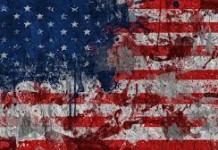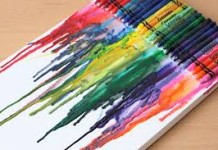By David Trend:
Heard about Generation Z? The demographic growing up in the 2000s? It’s a bigger group than Boomers or Millennials–––and it has one further distinction. “Members of Generation Z are ‘digital natives’ who cannot remember what it was like not to have access to the Internet –– no matter when, no matter what, no matter where,” according to Forbes Magazine. This is a group raised on networked “connecting” with others, sharing, and buying things. It’s second nature to Gen-Zers to upload their favorite music on YouTube, post images on Facebook, and sell things on Etsy or eBay. Much is being made in creative economy talk of how networks now blur traditional producer/ consumer roles, manifest in the new figure of the “prosumer.” In Wikinomics: How Mass Collaboration Changes Everything authors Don Prescott and Anthony D. Williams effused over the democratization inherent in the new “Openness, Peering, Sharing and Acting Globally.” Of course, there is nothing really new about home-made items, crafts, and people’s willingness to share. What’s different today is the ability to copy digitized materials and circulate them via electronic networks. Digitization also has made Generation Z the first demographic to be completely tracked by “big data” analytics.
Some creativity industry experts argue that this is nothing short of a revolution, driven by ongoing change more than any clear future. Evolutionary economist Jason Potts and collaborators have proposed what they term “Social Network Markets” unlike the top-down models of industrial capitalism. Characterized by fluidity and exchange through complex fields of actors, the new social network markets are less governed by competition and profit than by communication and preference. Participants are “Not ‘buying’ the property, but buying into the social space.” Moreover, the dynamics of these new markets are highly interactive. As the Potts group put it, “a social network is defined as a connected group of individual agents who make production and consumptions decisions based on the actions (signals) of other agents on the social network: a definition that gives primacy to communicative actions rather than connectivity alone.” Almost by definition, this process rules out conventional manufacturing or professional services. Instead, the networks generate value through production and consumption of network-valorized choices.”
The beauty is that much of what is online now is free––seeming to arrive just in time in a tight economy. While a lot of the “free” stuff available online is user-generated (selfies, birthday announcements, anecdotal postings, etc.), a huge volume of material comes from other sources (news outlets, filmmakers, commercial music producers, artists). On the surface it looks like old Marxist doctrines are being reversed as items seem to be “decommodified” in the sharing economy. This idea has become an anthem of resistance in some circles. The Burning Man Festival, to take one example, has stated: “When we commodify we seek to make others, and ourselves, more like things, and less like human beings. ‘Decommodification,’ then, is to reverse this process. To make the world and the people in it more unique, more priceless, more human.” This may be all well-and-good in the real-life sharing of food and weed at Burning Man. But when things get virtual, it’s usually a large corporation that owns the websites, servers, and networks that make sharing possible. Continue reading “Big Data vs Artists and Everyone Else”


